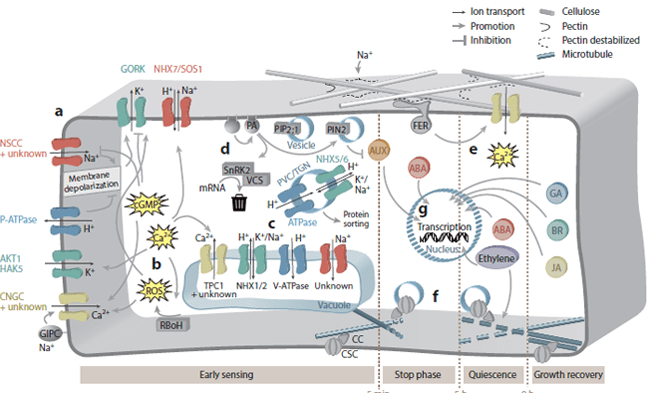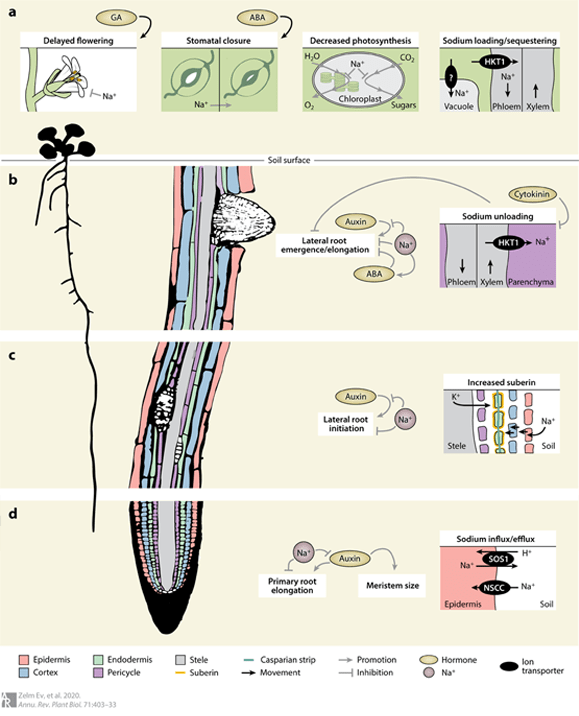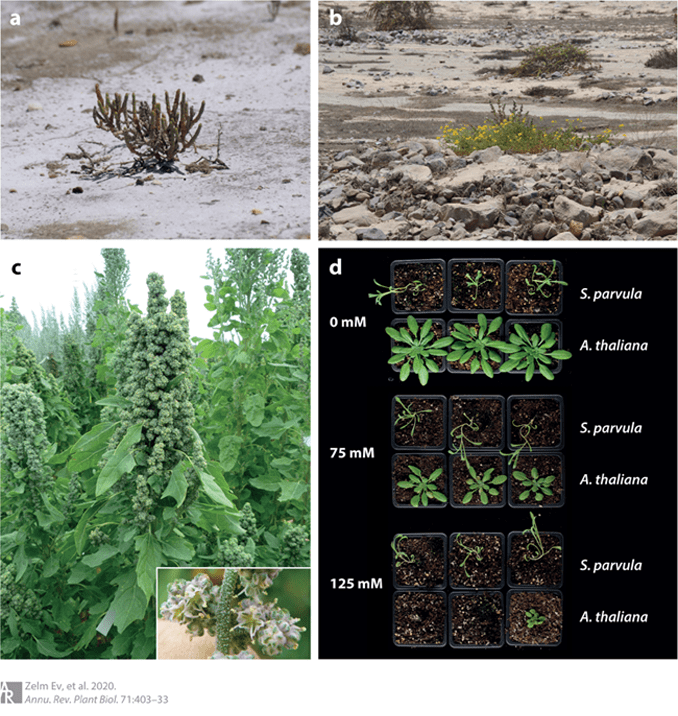What we do
BiosalineDB is mainly devoted to study halophytes via the multi-omics approach (genomics, transcriptomics, metabolomics, and proteomics), to explore their phylogeny and biodiversity, and to discover new functional components of plants.
Why we do
- Halophytes are those can survive in the environments where the salt concentration is around 200 mM NaCl or more, constituting about 1% of the world's flora.
- Halothytes grow in soil or waters of high salinity, coming into contact with saline water through its roots or by salt spray, such as in saline semi-deserts, mangrove swamps, marshes and sloughs and seashores.
- An example of a halophyte is the salt marsh grass Spartina alterniflora. Relatively few plant species are halophytes—perhaps only 2% of all plant species.
- Soil salinity is the salt content in the soil; the process of increasing the salt content is known as salinization. Salts occur naturally within soils and water. Salination can be caused by natural processes such as mineral weathering or by the gradual withdrawal of an ocean. It can also come about through artificial processes such as irrigation and road salt.
- Salinity in drylands can occur when the water table is between two and three metres from the surface of the soil. The salts from the groundwater are raised by capillary action to the surface of the soil. This occurs when groundwater is saline (which is true in many areas), and is favored by land use practices allowing more rainwater to enter the aquifer than it could accommodate.
- Soil salinization with 23% of the global cultivated land already affected; leading to the loss of crop yield, between 20% - 50% of its record, as well as decrease of terrestrial biodiversity.
Plant response to salinity
- Plant growth responds to salinity in two phases: a rapid, osmotic phase that inhibits growth of young leaves, and a slower, ionic phase that accelerates senescence of mature leaves.
- Plant adaptations to salinity are of three distinct types: osmotic stress tolerance, Na+ or Cl− exclusion, and the tolerance of tissue to accumulated Na+ or Cl−. (Munns R and Tester M, 2008, Annu Rev Plant Biol)
- Recent advances in phenotypingcan now functionally or genetically link cellular signaling responses, ion transport, water management, and gene expression to growth, development,and survival. (Zelm E. et al., 2020, Annu Rev Plant Biol)

Four stages of plants response to salinity stress: perception, early signaling, downstream signaling and adaptive response.

Cellular responses can be placed in different phases after salt application.

Relevance of tissue-specific ion transport, hormone signaling, and tissue growth for salt-induced phenotypic changes.

Success stories of salt-tolerant plants: a variety of plant species with relatively high salt tolerance.
For more information, please contact: CNGBdb@cngb.org.
